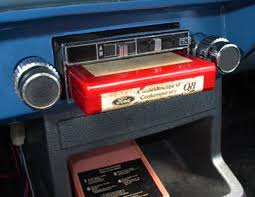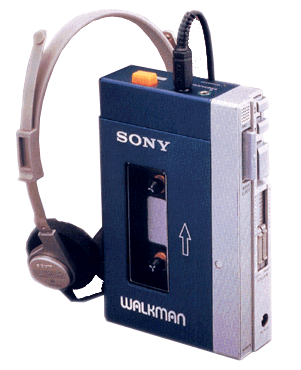I am renewing our search for a manager for our Crime Analysis Unit. Since many crime analysts read the Chief's Corner, I felt this might be a good venue to publicize the opening. If this seems like deja vu, you are correct: this position was previously advertised, but not filled. In the interim, at my initiative, the salary range has been raised and we are back in the market place. Applications will open at 4:30 CDT today, on the City of Lincoln's website.
Click here ( after 4:30 today) for the posting and details on the application process.
As you undoubtedly realize from reading this blog, the Lincoln Police Department is at the edge of the envelope in terms of our information resources, our crime analysis, and problem-oriented policing. Our officers are accustomed to swimming in a deep pool of information, and comfortable with information technology. Moreover, we have a staff that uses that information and analysis to inform street-level police work. It is a dynamic department for a crime analysis manager. Follow the links in the label cloud to “
Crime Prevention,” "
POP," or "
Crime Analysis," for many examples.
Our five-person Crime Analysis Unit (the unit also handles intelligence) is poised to move to a new level of excellence, and opportunities abound. We are partnering with the Nebraska State Patrol and the Omaha Police Department on the new Nebraska fusion center. We have recently upgraded several information systems and others are in progress, including digital evidence, our public website, automated license plate readers systems, Crimestoppers, digital video, our web-based GIS and dashboard, and more. We have many opportunities that the Crime Analysis Unit will be part of in the near future, and a staff that is anxious to learn and grow.
The Crime Analysis Unit manager will join the police department's other unit managers. Currently, our Service Desk, Records Unit, Information Technology Unit, Property & Evidence Unit, Police Garage, Accounting Unit, Victim/Witness Unit, and Forensic Unit are managed by civilian staff members who participate fully on the department's management team along with their sworn counterparts in operational units. You will work with a chief and a management staff who understand and appreciate the value of crime analysis and the contribution it makes to our success.
The salary range for this position reflects the economic conditions in Nebraska, where the cost of living is comparatively low. If you are living and working on either coast, you will want to consider in particular the cost of housing in Lincoln, which is quite reasonable. Take a look at home prices advertised by
one of our local
real estate brokers, or assessed values on the Lancaster County Assessor's
website to get a sense of what your housing dollar buys in Lincoln. Transportation costs are also low. Employee parking is free, downtown meters are .50 and hour, and a parking ticket is $10. This is a very bike-friendly city, with a great
trails network. Lincoln is widely-regarded as a great place to raise kids. The City is unusually safe, and maintains its small-town feel despite its population.
This city of a quarter million is home to the University of Nebraska and three other universities and colleges. We have a beautiful baseball park where the Lincoln
Saltdogs and the UNL Baseball team share the facilities. There is nothing quite like
Memorial Stadium on game days. Our voters just approved the development of a new 16,000 seat
arena in our historic
Haymarket, where a fabulous
farmer’s market operates on Saturday mornings. Lincoln's public schools are first rate. The local
arts scene is lively. We enjoy excellent
parks and recreation facilities. We have a variety of top-notch and reasonably-priced locally-owned eateries. I'll put
The Oven up against any Indian restaurant in the country, and the craft brews at
Lazlo's against any brewpub anywhere. You are 8 hours from Rocky mountain skiing, a bit less than three hours from the Kansas City metro area, and just under an hour from Omaha--all offering great day trip amenities.
I live on the fringe of Lincoln, and my daily commute to police HQ downtown is 15 minutes. I get a little perturbed if it takes 17. I actually had to wait through two cycles of a
traffic light last night during rush hour. Weekday greens fees at our four 18-hole city-owned
courses are $18. The long-term parking lot at the
airport is less than a block from the front door of the terminal, and will set you back $4 per day. A movie for two with popcorn and a Coke still costs $13,309. Such is life.
If you are a crime analyst who is tired of spending two hours commuting to and from a job where you are treated like a second class citizen because you don't wear a badge,we offer an alternative. If you are expected to fetch statistics and make the chief's PowerPoints, I do my own. If you are looking for a chance to spread your wings and grow professionally, we have a challenge. If you simply want to discuss this opportunity, I have a phone and email, and I would love to talk you in confidence:
Tom Casady
402.441.7237
tcasady@lincoln.ne.gov



































 Sunday morning, though, after a lumberjack breakfast of cinnamon French toast and bacon, the weather was cool and thunderstorms loomed. Undaunted, Kelly, her husband Andy and I set off. We had consulted our electronics, and concluded the storms would track north of the City. Wrong. Leaving home in far south Lincoln, by the time we hit the Rock Island trail at Highway 2, it was clear we were in for a downpour and some lightning.
Sunday morning, though, after a lumberjack breakfast of cinnamon French toast and bacon, the weather was cool and thunderstorms loomed. Undaunted, Kelly, her husband Andy and I set off. We had consulted our electronics, and concluded the storms would track north of the City. Wrong. Leaving home in far south Lincoln, by the time we hit the Rock Island trail at Highway 2, it was clear we were in for a downpour and some lightning.  When the great flood subsided, we continued down the Billy Wolf into the brand new Antelope Valley channel. At ground level, the trails, channel, and Union Plaza are even more impressive. Y
When the great flood subsided, we continued down the Billy Wolf into the brand new Antelope Valley channel. At ground level, the trails, channel, and Union Plaza are even more impressive. Y ou just marvel at how planners, architects, and engineers were able to visualize this. We went the length, all the way to Memorial Stadium, before turning for home.
ou just marvel at how planners, architects, and engineers were able to visualize this. We went the length, all the way to Memorial Stadium, before turning for home. 